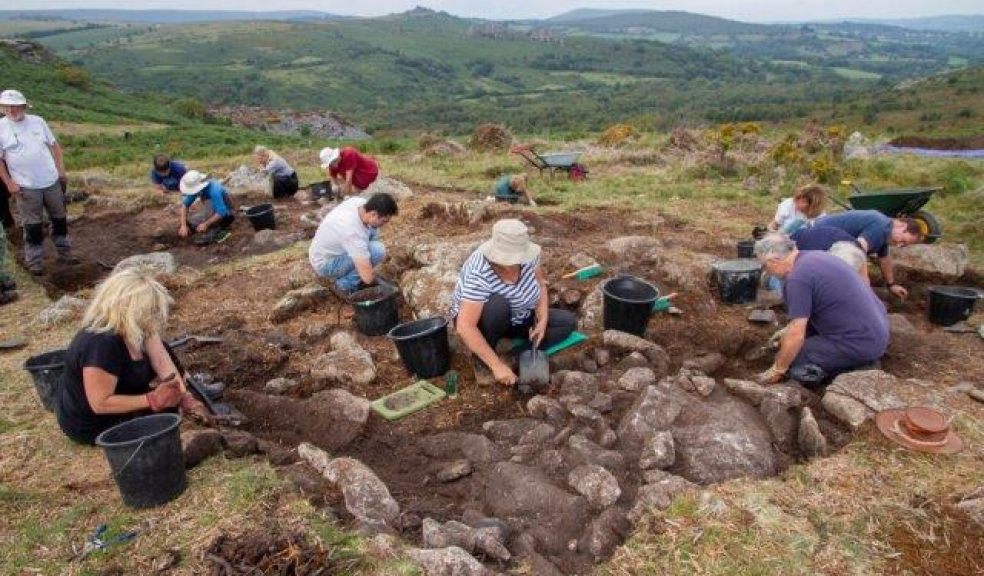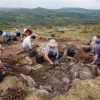
Digging prehistory on Dartmoor
A team of Dartmoor National Park archaeologists and local volunteers are currently carrying out an excavation on a prehistoric site, near Haytor.
The site at Holwell Tor, consists of an isolated Middle Bronze Age (around 1,500 BC) hut circle and two reaves (prehistoric boundaries). The first objective of the excavation is to investigate the function of the building; its isolation makes it unusual, so the team will try and determine whether it was a dwelling, a byre for animals, a store, workshop or something else entirely. They have now exposed the walls of the building and are already finding evidence of our ancient ancestors in the form of flint tools.
The second objective is to attempt to investigate the environment contemporary with the use of the building. This work will be done in collaboration with the University of Brighton by trying to find the remains of soils dating to the Bronze Age beneath the modern soils. Using sophisticated scientific analytical techniques the team may be able to reveal information on farming practices, climate and local vegetation at the time the building was in use.
Lee Bray, National Park Archaeologist and excavation director, said: 'In the last fifty years only a handful of Bronze Age houses have been excavated, so we're keen to find out what the results of the Holwell excavation will add to our knowledge of this very important period in Dartmoor's human past. Also, we're pretty excited about providing our volunteers with a rare opportunity to get to grips with prehistoric Dartmoor.'
The dig continues at the site until 14 September and is part of the Moor than meets the eye Bronze Age Project.














